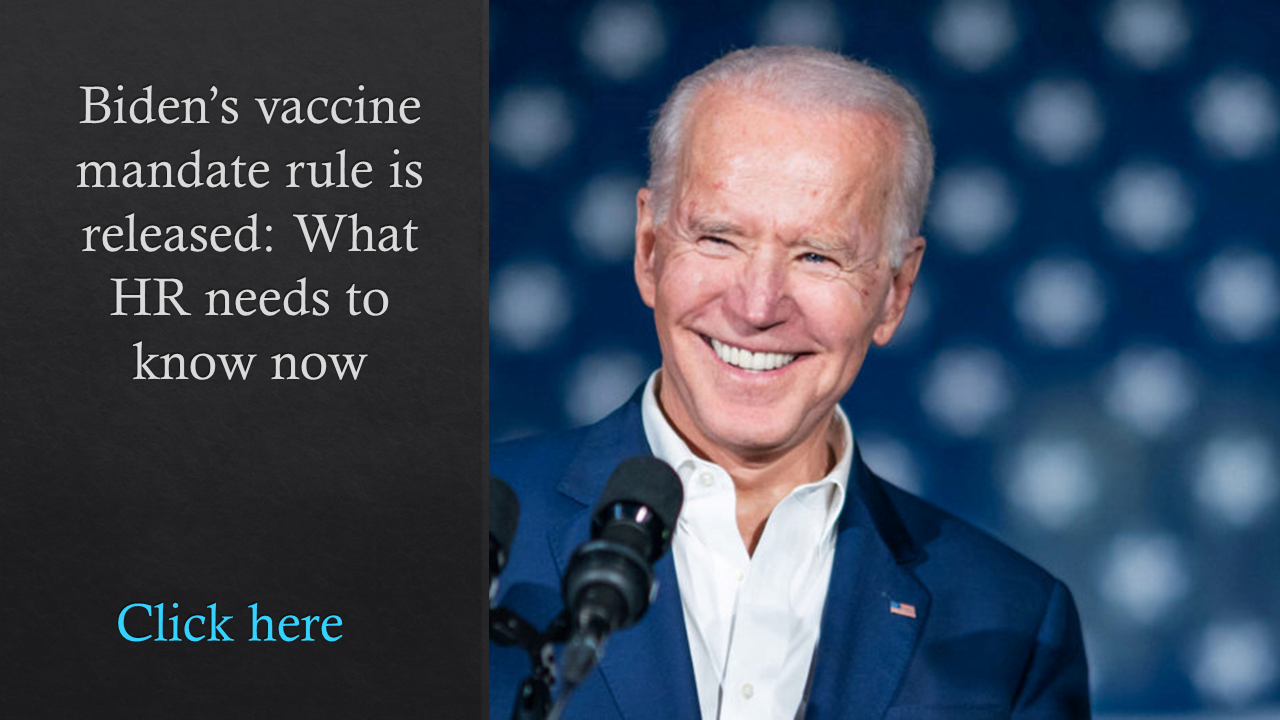Following last week’s announcement of the new OSHA guidelines mandating that firms with more than 100 employees that do not require vaccinations provide proof that unvaccinated employees are tested weekly, HR technology providers are offering tools and services for both remote and onsite COVID-19 testing.
But there’s a hitch: The OSHA rule states that a compliant COVID-19 test is “not both self-administered and self-read unless observed by the employer or an authorized telehealth proctor.” (This can be found in Section 6.J at this OSHA FAQ page.)
That language, disallowing at-home tests and self-reporting of results, leaves most employers with two options: Bring the testing in-house and have an administrator watch the test application and record the result, or use tests analyzed by a lab and coordinate reporting back to the company.
Related: The employer COVID-19 mandate: 5 things HR leaders should know
“In either case, the employer must manage the test results and is required to be able to report those results to their employees and the government. HIPAA compliance concerns aside, this could be a monumental feat,” says Tracie Woods, director of talent acquisition for 1health, an at-home and work COVID testing solution provider. The tool lets employers order testing kits and then either have an administrator report results within the 1health system or have a lab automatically send results into the company’s database so employees and “necessary” administrators can see them.
As the pandemic has progressed, of course, some employers have already brought testing in-house, says Cindy Salas Murphy, CEO of WithHealth, a telehealth company that manages workplace COVID testing. “We have worked with many clients that have adopted this strategy as a method to ensure workplace safety,” she says. “They conduct weekly testing and have safely returned to the office without outbreaks.”
 Other employers have opted to rely on companies, such as at-home testing provider Vault Health, that can send testing teams to a worksite and collect samples from employees during a testing event. Kate Brickman, communication director for one such company, Vault Health, says onsite testing looks as different as the variety of American workplaces.
Other employers have opted to rely on companies, such as at-home testing provider Vault Health, that can send testing teams to a worksite and collect samples from employees during a testing event. Kate Brickman, communication director for one such company, Vault Health, says onsite testing looks as different as the variety of American workplaces.
Vault Health brought the first saliva-based COVID test to market last year and has sold more than 10 million testing kits in the U.S. Brickman says break rooms and conference rooms are the most common locations dedicated to onsite testing events, but office lobbies and atriums and even large tents and trailers also can be used. Provider teams can visit regularly to conduct testing or the company can train the employer’s staff—typically HR staff—to oversee testing and logistics.
COVID-19 confidentiality
Another concern is that under the new OSHA mandate, employers must keep records of employee test results and vaccine data and must report any COVID-related deaths to OSHA, raising risks associated with how the data is held and protected, say experts.
Related: 5 experts takeaways from the new OSHA vaccine mandate
HR leaders should exercise extra caution with employee test results because some aspects of vaccine status can generate explicit and implicit biases toward employees, according to Murphy. “Whether an employee has deep religious beliefs or a disability that prevents them from getting a vaccination, [HR admins] must navigate carefully as we are seeing some compassion fatigue, even from healthcare workers, from patients that are unvaccinated and get COVID,” she says.
 Murphy notes a parallel with the compassion fatigue that emerged in the early years of HIV. “Specifically, we saw criticism towards patients with HIV and AIDS because they `chose to share needles’ or `chose a specific lifestyle,’ ” she says, warning that unvaccinated employees could face similar judgments.
Murphy notes a parallel with the compassion fatigue that emerged in the early years of HIV. “Specifically, we saw criticism towards patients with HIV and AIDS because they `chose to share needles’ or `chose a specific lifestyle,’ ” she says, warning that unvaccinated employees could face similar judgments.
With the challenges in implementing the new mandate, 1health reports that most HR leaders it works with are just starting to prepare their COVID testing and vaccination tracking plans. “They’re in action mode trying to solidify their company’s policies while finding the resources to put that plan into action,” says Woods.
“We polled a group of HR leaders we met with earlier last month and a full third lacked any vaccine tracking policy with another quarter relying only on self-attestation,” she says.“Both groups will need an entirely new system of tracking their employee’s vaccinations to comply with the mandate.”

